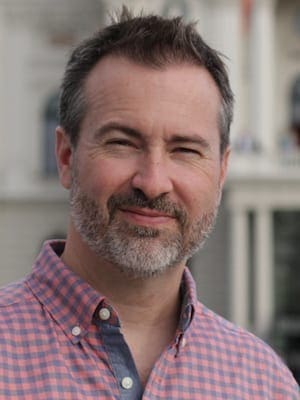On Jan. 2, 1965, Martin Luther King Jr. led a “mass meeting” at Brown Chapel in Selma, Ala. This meeting kicked off the involvement of King’s Southern Christian Leadership Conference in Selma’s voting rights campaign.
King had already survived the Montgomery Bus Boycott of 1955-56 and the brutal Birmingham demonstrations of 1963. He had witnessed the passage of the 1964 Civil Rights Act, and been awarded the Nobel Peace Prize that same year.
Now he found himself back in Alabama’s Black Belt, invited to town by the Dallas County Voters League Only about one percent of Dallas County’s black voting population was registered to vote.
The Jan. 2 meeting broke a 1964 injunction given by Circuit Judge James A. Hare forbidding groups of more than three people to “assemble.” With the injunction, Hare intended to stop mass meetings aimed at mobilizing support for the growing campaign.
Significantly, the meeting was also called an Emancipation Proclamation celebration, as it fell on the 102nd anniversary of Lincoln’s freeing the slaves. This allowed Selma’s director of public safety, Wilson Baker, to call the gathering a celebration and not a meeting in violation of Hare’s injunction.
Baker intended to avoid a public display as much as Selma’s activists intended to create one. Here, Baker contrasted sharply with the Dallas County Sheriff Jim Clark. Whereas Baker largely ignored the activists hoping they would go away, Clark could not resist a confrontation. What Bull Connor was to Birmingham, Clark was to Selma.
King’s presence helped mobilize the black citizens of Selma, and Feb. 1 he and right-hand man Ralph Abernathy were arrested as planned. They tried to lead a “parade” to the courthouse. Along with about 260 others, they were taken to the local jail where King wrote a letter, one much less famous than its Birmingham counterpart.
“This is Selma, Alabama. There are more Negroes in jail with me than there are on the voting rolls,” read the letter as it appeared in the New York Times.
While King was in jail, Malcolm X visited Selma and told Coretta Scott King that he figured if white folks saw the alternative to King, they might sooner listen to him. Malcolm’s veiled threat was made public, and King was released from jail after a few days.
The movement continued and reached a crescendo on Mar. 7, Bloody Sunday, when Alabama state troopers and Clark’s “possemen” beat several hundred demonstrators crossing Edmund Pettus Bridge on their way to Montgomery. King wasn’t in Selma on Bloody Sunday, but he arrived in town two days later to lead what became known as the Turnaround March.
After Bloody Sunday, people from across the country flooded Selma in protest of the Pettus Bridge incident. With pressure building to try to march again to Montgomery, King found himself at an odd juncture. Thousands had gone to Selma to march to the state’s capitol, but King and other leaders were still awaiting federal protection for such a march.
The solution, worked out and known only to the leaders on all sides, called for King to lead demonstrators to the site of Sunday’s attack, pray and return to Brown Chapel. Remarkably, the demonstrators followed King’s turnaround, though by his own admission he wasn’t sure they would.
Movement leaders finally received approval to march to Montgomery, and on March 25, King and others began the procession to the cradle of the Confederacy–a march that would last five days and cover 50 miles.
Former Atlanta Mayor Andrew Young was with King as the marchers prepared to enter Montgomery on Thursday, March 29. Young received word of a plot to shoot King as the group moved through Montgomery. John Doar of the Justice Department wanted King removed from the group and driven to the capitol. King refused and demanded to walk with everyone else.
Young, still fearful for King, searched for solutions to help ensure King’s safety. Young later recalled his plan:
“Martin always wore the good preacher blue suit. I figured since we couldn’t stop him from marching, we just had to kind of believe that it was true when white folks said we all look alike. So everybody that was about Martin’s size and had on a blue suit I put in the front line with him. Of course, I had on my blue suit. We all just lined up.”
King arrived safely at the capitol in Montgomery, where he told the thousands assembled:
“They told us we wouldn’t get here. And there were those who said that we would get here only over their dead bodies, but all the world today knows that we are here and that we are standing before the forces of power in the state of Alabama saying, ‘We ain’t goin’ let nobody turn us around.'”
The Voting Rights Act was passed later that year, at a cost of hundreds of demonstrations, thousands of jailings, countless injuries, and the deaths of three–Jimmie Lee Jackson, James Reeb and Viola Liuzzo.
Cliff Vaughn is culture editor of EthicsDaily.com. This article appeared originally in EthicsDaily.com on Martin Luther King Day in 2002.




